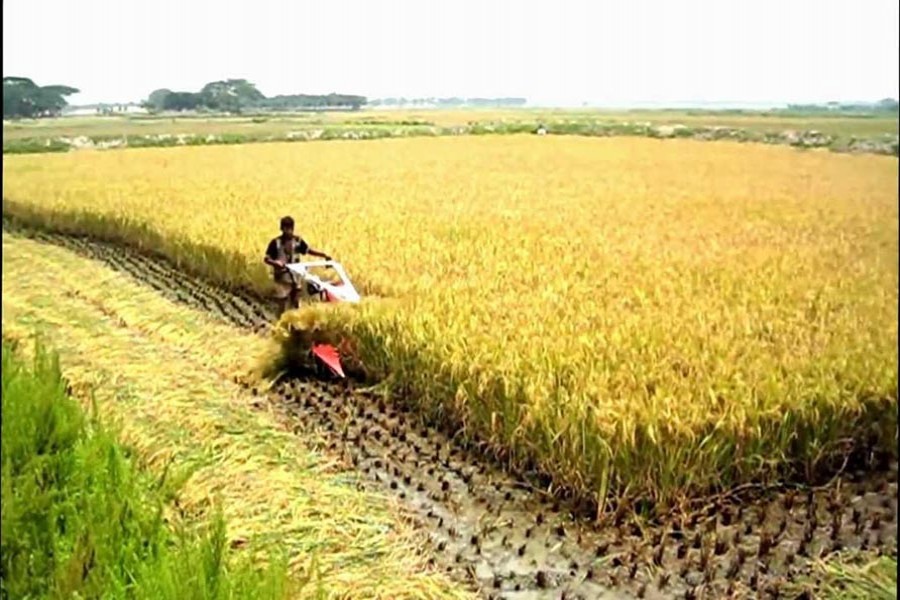Use of farm tools could be a gripping subject of debate in this country because of the limited cultivable land and an oversize population. So far the official encouragement has been for high yielding varieties (HYV) of crops, rice in particular, and use of fertiliser and irrigation. On account of irrigation, farm implements in this area have received the main focus. Along with this the method of cultivation also demanded some attention. But the areas that have mostly remained out of focus are advanced harvesting, seeding and transplantation tools. And this is for reasons understandable. Earlier at the time of introduction of the HYV rice, labour was mostly surplus but gradually with the transformation of the country's economy, agriculture have started witnessing a shortage of labour. Reports are aplenty that during the peak harvesting period, in some areas crisis of labour is so acute that paddy cannot be harvested in time or at all. The crisis becomes acutest when sudden onrush of water from one or other source floods paddy fields. One such example is the flooding of near ripe or ripe paddy in Sunamganj's Haor. Other areas are not foreign to this reality.
Clearly, the country's agriculture is facing a new kind of challenge all across the country on account of labour shortage. Transplantation which is one of the most important activities of paddy cultivation also gets hampered by non-availability of required farm labourers. One of the reasons for this is the shifting of occupation by a large number of farm labourers. They opt for more paying jobs and land-owners of large farm size in rural setting are not habituated to toil in farms. Many of these farmers have opted for mechanisation of cultivation but are yet to shift to mechanised harvesting and plantation. It is time they did. Only a few have procured reapers-cum-planters. These machines should have been popular by this time after the Haor harvesting debacle. Noticeably, these machines are not receiving the promotion they deserve.
If agriculture's conversion to agro-industry receives priority in the interest of both farmers and rural economy, not only reapers and planters but weeders -portable or otherwise - and other implements have to be introduced in order to make farm activities easier and faster. Productivity of a farmer in Bangladesh is not even half of his Sri Lankan counterpart. Dollar 700 for a Bangladeshi farmer cuts a sorry figure when compared with $1,209 for an Indian farmer and $1,700 for a Sri Lankan farmer. It is the mechanised facilities or the lack of those that make the difference.
In a situation like this the obvious option would be the adoption of agricultural machines. But the authorities must have to take into account the number of available farm hands. The balance between manual and mechanised agriculture should not be disrupted suddenly. It has to be carried out methodically. Reportedly, 43 per cent of the total labourers are still engaged in agriculture and it is expected to come down to 36 per cent by 2020 if the current rate of mechanisation takes place. The process needs to be expedited somewhat in order not to waste matured corns in the field.


